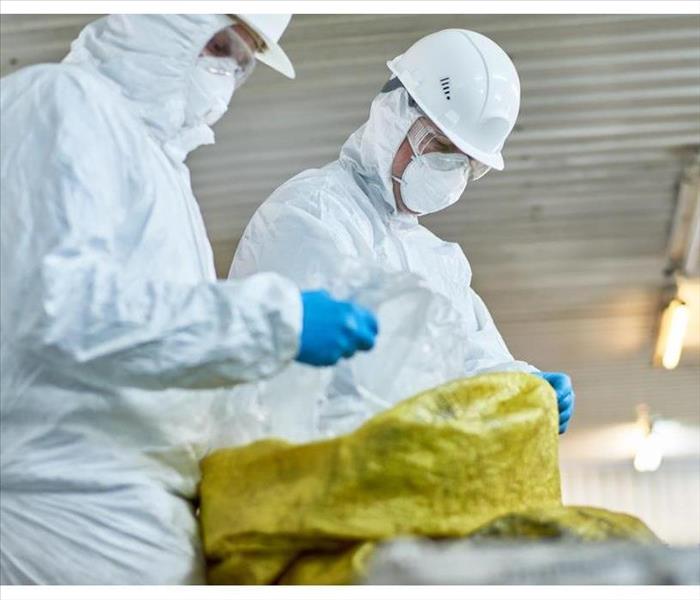8 Steps of the Sewage Cleanup Process
12/15/2021 (Permalink)
 The more contaminated the water causing the damage to your home, the more time cleaning the water is likely to take. call SERVPRO, we can help you.
The more contaminated the water causing the damage to your home, the more time cleaning the water is likely to take. call SERVPRO, we can help you.
The Sewage Cleanup Process In 8 Steps
If your home in Oklahoma City, OK, is flooded with sewer water, the mitigation process extends beyond basic water cleanup. Here are the eight basic steps sewage remediation experts must take to restore your home.
1. Wear Personal Protective Equipment
A sewer backup results in a Category 3 water spill. Because the damage is highly contaminated, technicians must wear impervious coveralls, rubber boots, goggles and a face mask with a respirator to protect themselves.
2. Contain the Area
You want to prevent bacteria and other germs from spreading through the air into the rest of your home. Before cleanup begins, the area must therefore be contained.
3. Pump Excess Water Out
Standing water is extracted through an industrial pump. It flows into a tank where it remains until it can be discarded safely after water cleanup.
4. Remove Affected Items and Materials
All items in the area must be removed. If they cannot be cleaned, they are discarded. Walls, ceilings and flooring must also be removed if they are touched by contaminated water. Any consumable items such as food, toiletries or drinks that were in the path of the sewage must be thrown away.
5. Dry All Surfaces
All surfaces must be dried to avoid secondary damage. Technicians may use fans or open windows to circulate fresh air from outside.
6. Clean All Surfaces
Because a flooded toilet contaminates everything the water touches, all surfaces must be disinfected. Experts use powerful cleansers and test to ensure that germs are gone.
7. Restore Materials
After everything is clean, the restoration process begins. Walls and ceilings are rebuilt, and flooring is replaced.
8. Replace Salvaged Items
Any item that can be saved can be returned to the area once it's clean. Keep a list of items that have to be discarded for insurance purposes.
The more contaminated the water that causes the damage to your home, the more time-consuming water cleanup is likely to be. Use certified experts to ensure all the necessary steps are taken.





 24/7 Emergency Service
24/7 Emergency Service